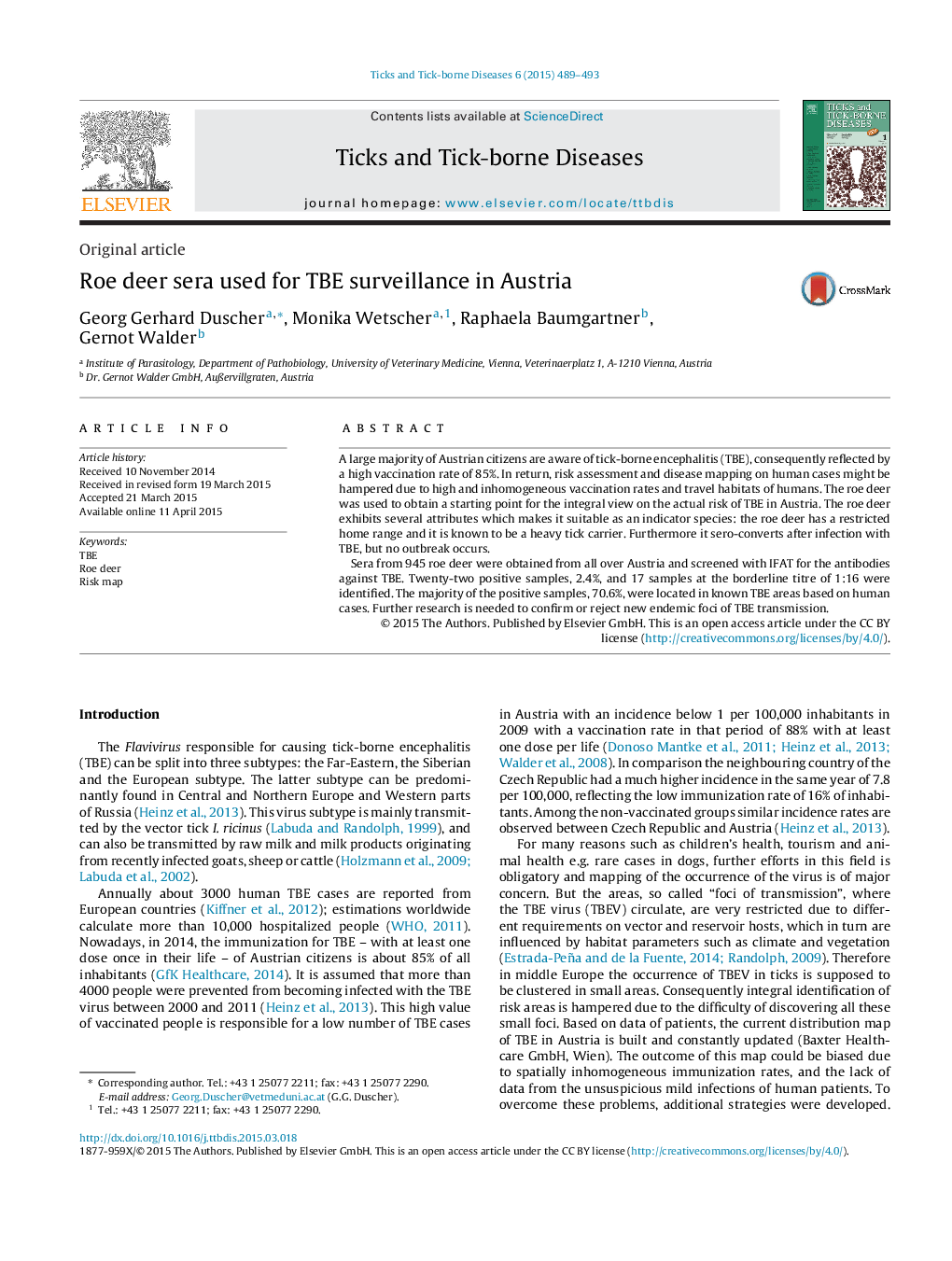| Article ID | Journal | Published Year | Pages | File Type |
|---|---|---|---|---|
| 5807304 | Ticks and Tick-borne Diseases | 2015 | 5 Pages |
A large majority of Austrian citizens are aware of tick-borne encephalitis (TBE), consequently reflected by a high vaccination rate of 85%. In return, risk assessment and disease mapping on human cases might be hampered due to high and inhomogeneous vaccination rates and travel habitats of humans. The roe deer was used to obtain a starting point for the integral view on the actual risk of TBE in Austria. The roe deer exhibits several attributes which makes it suitable as an indicator species: the roe deer has a restricted home range and it is known to be a heavy tick carrier. Furthermore it sero-converts after infection with TBE, but no outbreak occurs.Sera from 945 roe deer were obtained from all over Austria and screened with IFAT for the antibodies against TBE. Twenty-two positive samples, 2.4%, and 17 samples at the borderline titre of 1:16 were identified. The majority of the positive samples, 70.6%, were located in known TBE areas based on human cases. Further research is needed to confirm or reject new endemic foci of TBE transmission.
